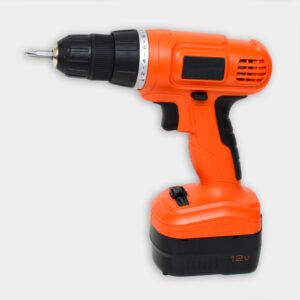Project details
Skill
Cost
Estimated Time
As winter approaches, homeowners often find themselves battling drafts and rising energy bills. Thankfully, properly sealing your windows and doors can help. In the video above, This Old House general contractor Tom Silva reveals his most effective techniques for sealing windows and doors to keep the cold air out and the warm air in.
Common Areas of Heat Loss
Windows and doors are the primary culprits of heat loss in homes. Here are some common areas where heat escapes:
- Cracks in the window pane or frame
- Gaps between the door and the frame
- Gaps between the window frame and the wall
- Spaces between the door and the floor
- Spaces between the sash and frame
- Worn or damaged weather stripping
Techniques for Sealing Windows
There are several ways to seal windows effectively for winter. The best approach depends on the type of window and the specific issues you’re facing, but here are common techniques:
- Foam tape: Foam tape is particularly useful for sealing irregularly shaped gaps. Carefully measure and cut the tape to size to cover the entire gap.
- Temporary caulking: For windows that you won’t open until spring, seal them shut with temporary caulking. You can press it into place and easily peel it off when winter is over. This method is quick, easy, and reversible.
- Weatherstripping: Weatherstripping is an effective way to seal gaps around movable window parts. Measure the length of each side of the window and cut the weatherstripping to fit. Make sure to test the window to ensure it still opens and closes smoothly.
Sealing Double-Hung Windows
Double-hung windows require special attention because of their design. Silva emphasizes the importance of using sash locks on these windows to close the gap along the meeting rail. Here’s how he does it:
- Close the window completely.
- Engage the sash locks to pull the upper and lower sashes together.
- For wide windows, consider installing two sash locks for a tighter seal.
- To prevent air leakage at the top of the window, apply adhesive-backed foam weather stripping to the top edge of the upper sash. The foam should compress slightly when the window is closed.
- Use foam or rubber backer rod to fill large gaps between the lower sash and the sill. Cut the backer rod to size and force it into the space.
Techniques for Sealing Doors
It’s equally important to seal doors to prevent drafts. Here are some common methods:
- Foam tape for gaps: Foam tape can be useful for doors with uneven gaps. Clean the area thoroughly, measure and cut the tape to fit the gap, and press it firmly into place.
- Installing a door sweep: Install a door sweep along the bottom of exterior doors. Choose a sweep made of durable materials that can withstand constant opening and closing. The sweep should make contact with the threshold without causing resistance.
- Weatherstripping: Apply weatherstripping to the sides and top of the door frame to create a tighter seal. This prevents air from leaking in around the door’s edges. You can also add weatherstripping around the doorjamb.
Addressing Other Air Leaks
While windows and doors are the biggest culprits, they’re not the only potential sources of air leaks in your home.
Sealing Electrical Outlets
Surprisingly, electrical outlets on exterior walls can be a significant source of air infiltration. TOH host Kevin O’Connor says that 2%–5% of air infiltration in a house comes from around outlets. Follow these steps to address this issue:
- Remove the outlet cover plate.
- Install a soft rubber gasket over the outlet.
- Replace the cover plate.
This simple process can significantly reduce air leakage through these easily overlooked areas.
Filling Gaps Around Wall Penetrations
Holes drilled for cables, vents, and pipes can allow cold air to enter your home. Follow these steps to seal them:
- Identify all wall penetrations.
- Clean the area around each hole.
- Use minimal expanding foam to fill the gaps.
- Once dry, trim any excess foam.
Chimneys and Ducts
Chimneys, flues, and ducts can also allow cold air to seep into your home. Inspect these areas and seal any gaps with appropriate materials, such as high-temperature caulk or durable weather stripping. Keep the fireplace damper closed when you’re not using it to prevent drafts.
Sealing Windows and Doors: Sustainable Choices
For those concerned about their environmental impact, there are eco-friendly sealing options available. Look for products made from recycled materials or sustainable sources. Many weatherstripping and caulking products are designed to reduce your carbon footprint while enhancing your home’s efficiency.
Home Air Sealing: Cost Considerations
Consider the cost of each sealing option. Temporary solutions, such as foam tape, are generally less expensive. More permanent solutions like weatherstripping cost more but last longer. Here are some typical prices for different materials at big-box hardware stores:
- Backer rod: $0.50 per foot
- Foam tape: $0.50 per foot
- Temporary caulk: $10 per tube
- Weatherstripping: $2.50 per foot
Professional Assistance
Homeowners who are unsure about the best sealing materials or techniques can consult an energy auditor or weatherization specialist. These professionals can assess your home and recommend the most effective methods.



